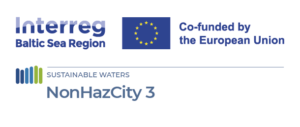Nowadays there is a lot of talk about detoxing the body to get rid of bad toxins in your organism. But in fact our body has many organs e.g. the liver, which continuously remove toxins from our body. Hazardous substances in our homes and in our environemnt, however, do not disappear by themselves. Let’s talk about detoxing our homes!
Hazardous substances are invisible to the human eye, but they are used in many products, materials and goods to give consumer products their desired properties, such as odor, color, elasticity, shelf life, water and fire resistance, and so on. That means that there may be hazardous substances in your wardrobe, sofa, carpets, children’s toys and even in the frying pan. These substances can be harmful to your health and the environment. We have published a new, easy-to-use guidebook that will help clean your home of hazardous substances and will make it easier to make smarter and healthier consumer choices.
This guidebook is a step-by-step manual to detoxify your home by walking you through the process room by room. It provides information about what to look for, remove or substitute to avoid hazardous substances in all the different rooms of your home. It provides checklists that you can fill out and repeat periodically (e.g. after 6 months). You can fill out the checklists via Adobe with a smart phone or PC. This will help you see the progress you have made and what challenges you need to prioritize.
In most rooms, the checklists starts with counting how many products and articles you use. Most of us own a much larger amount of articles and products than we need or use. Hence, to detoxify our homes, the first step is to clear those items out. If you live in a family ask for support and start by clearing out your own property first. Before you throw out things for the whole family check you have their permission and support – step by step is the motto!
Let’s start with the wardrobe. It doesn‘t matter whether it’s expensive or cheap: during production clothing is in contact with a variety of chemicals.
Over 20,000 different chemicals are used in the textile and fashion industry. That is about 30 % of the used chemicals worldwide! A lot of these chemicals are harmful to human health and the environment, such as azo dyes, many solvents and flame retardants.
Living room is a more complicated case, as it can contain various sources of hazardous chemicals. These can, for example, be flame retardants and plasticizers, that are released from furniture, flooring, wall paints, electronics, cables, and also textiles like curtains, carpets and pillows. Substituting living room items such as curtains or shelves is obviously not as easy as removing those old running shorts you don’t wear anymore. But a good recommendation without a full renovation is to frequently clear away dust from your electronic devices and ensure to ventilate your living room very frequently. Chemicals accumulate in dust. It is especially important to vacuum near electronic devices as they release both flame retardants and phthalates.
The children’s room is often the most polluted room in the home. Chemicals are released from furniture, toys and electronics and can affect both air quality and health. At the same time, children are more sensitive to hazardous substances than adults. If you have children then their room is a good place to start their chemical-smart education. Sort out items that are not meant to be toys which are probably not safe for children (e.g. mobile
phones).
Don’t get discouraged by the level of detail of the guidebook. It is meant for everyone: those who already know what VOCs (volatile organic compounds) and PFS (hydrofluorocarbons) are and those who do not. It is always possible to take just one step towards a home free of hazardous substances!

